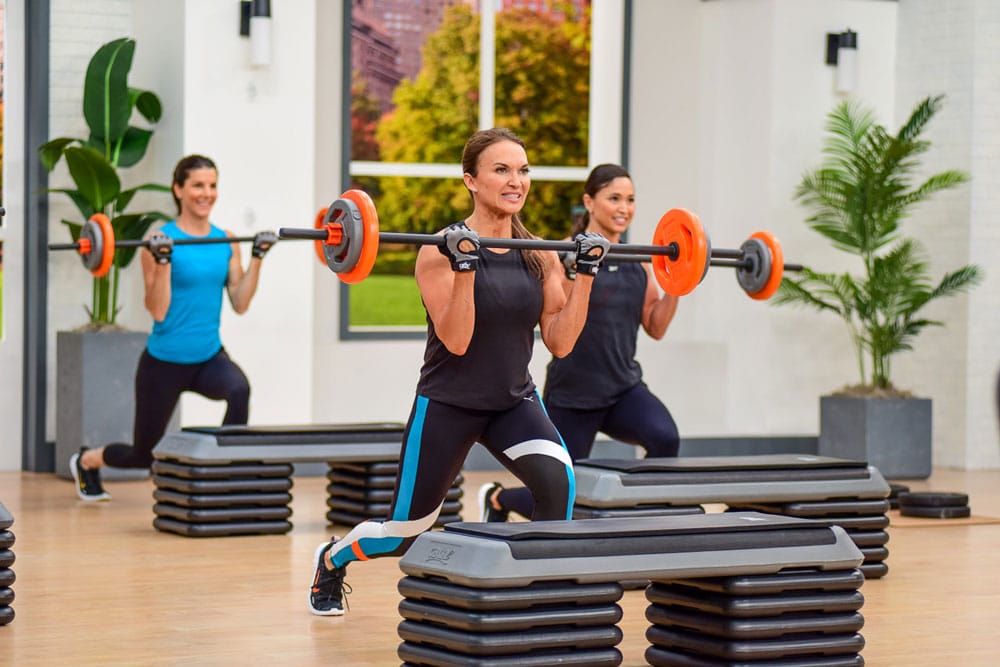It’s no secret that exercise is “the bomb” for health and fitness. When you launch into a workout it induces a variety of adaptations at the cellular level that underlie many of the performance improvements and health benefits associated with physical activity. But have you ever wondered what’s happening at the cellular level when you lace up your exercise shoes? Let’s find out.
Mitochondrial Biogenesis
One of the key adaptations to endurance exercise training is an increase in mitochondrial biogenesis – the growth and proliferation of pre-existing mitochondria. As you know, mitochondria are membrane-bound organelles present inside cells that generate most of the chemical energy needed to power the cell’s functions. They produce ATP, the main energy molecule used by cells.
Endurance exercise sends signals that spur muscle cells to grow and divide their mitochondria, so each cell gets more of them. By increasing mitochondrial biogenesis, muscle cells expand their capacity to produce ATP aerobically. Key signals driving this mitochondrial adaptation include rises in calcium levels, AMPK activity, reactive oxygen species, and alterations in energy/redox status during contractile activity. These signals switch on genes involved in mitochondrial proliferation through coactivators like PGC-1α.
As a result, muscle cells boost production of proteins required for mitochondrial respiration and substrate oxidation. This expands the mitochondrial network inside your cells and increases access to oxygen and aerobic ATP regeneration. By proliferating mitochondria, muscle cells enhance their ability to use oxygen and generate more energy aerobically. This adaptation makes greater endurance capacity possible and explains why aerobic performance improves with endurance training.
Angiogenesis
Endurance exercise also activates signals causing capillary growth around muscle cells, called angiogenesis. This expands the surface area for nutrient delivery and waste removal. Key signals include rises in intracellular calcium and activation of PGC-1α during muscle contractions. PGC-1α is like a coach that tells a cell to make more mitochondria when it needs more energy. It helps the cell change which foods it uses for energy, like sugars or fats. It also helps the mitochondria work better by turning on genes that make proteins that help mitochondria.
With more capillaries, you get increased blood flow to your working muscles. This allows more oxygen and fuels to get to muscle cells and more metabolic byproducts to leave. By expanding the capillary network, muscles gain greater access to oxygen and nutrients to sustain aerobic metabolism. This permits muscles to contract for longer periods before fatiguing.
Exercise-induced capillary growth enables greater endurance capacity by enhancing the ability of muscle cells to aerobically generate ATP. The increased capillary density allows muscles to meet the heightened metabolic demands of endurance activities.
Satellite Cell Activation
When you lift weights, your muscles don’t just mechanically contract – they mobilize an underground cellular workforce that grows your muscles!
Nested on the outskirts of muscle fibers are muscle satellite cells. These special stem cells wait for physical overload before deploying into action. When overload sensors in your muscles detect increased tension and micro-damage from heavy strength training, they sound the alarm, signaling satellite cells to activate.
Emerging from their niches, satellite cells proliferate, migrate towards stressed fibers, and fuse with them – donating their nuclei to the fibers they engraft. It’s like your muscle fibers employ these molecular mercenaries when needing to bolster their cellular architecture under heavy resistance. The more nuclei fused to a fiber, the greater capacity it has to increase protein synthesis and undergo hypertrophy.
This process allows fibers to adapt maximal size and strength in response to progressive weightlifting programs. So, in many ways, satellite cells are key cellular players mediating the long-term gains in muscle mass built via strength training regimens.
Pretty amazing to think your muscles have a secret troop reserve on standby that rushes in when strength needs scaling up. Together with the fibers they fuse to, satellite cells allow impressive remodeling and growth of muscles under the duress of iron.
Molecular Signaling
On a molecular level, exercise activates a variety of signaling kinases that respond to increases in mechanical load, muscle tension, metabolites, oxygen flux, hormones like IGF-1, and more. When you exercise, your muscles don’t just mechanically contract and relax – they kick off a molecular frenzy inside muscle cells to build strength and endurance.
Sensing increased mechanical and metabolic stresses from exercise, sensor proteins in muscles spring into action, kicking off a molecular relay race inside your cells. Like batons, signaling kinases get activated and switch on transcription factors that rush to the nucleus and turn on genes orchestrating adaptations.
It’s like your cells hear the starting gun of exercise and shout “Go! Go! Go!” to these protein messengers speeding toward the DNA stadium. Their mission is to rapidly alter gene expression and protein translation in your muscles.
These molecular couriers switch on genes that ramp up the production of contractile proteins like actin and myosin to empower your muscles. They also activate proteins boosting mitochondria and capillary growth to enhance metabolic capacity and oxygen delivery.
In many ways, exercise sets off a molecular revolution inside your muscle cells. Thanks to this cellular stimulus, your muscles adapt to meet heightened mechanical and metabolic demands – all triggered by molecular signals training your DNA like an athletic coach with a clipboard, stopwatch, and a whistle.
Antioxidant Defenses
When it comes to exercise, moderation is key for protecting your muscles. A moderate workout pumps up your body’s built-in antioxidant defenses, helping sweep away free radicals before they can damage your cells. But push too hard, and you outpace your muscles’ cleansing crews, allowing oxidative villains to run amok.
Too many reactive oxygen species can sabotage proteins, shred lipids, and puncture DNA. Yet even as extreme exercise hands your cells a beating, it whips your internal antioxidant systems into shape. Repeated workouts boost levels of free radical fighters like SOD (superoxide dismutase) and glutathione peroxidase, allowing your muscles to eventually neutralize the oxidative threat.
So, while the occasional intense session floods your body with cell-damaging oxidative agents, regular moderate workouts enhance your natural antioxidant protections. By consistently challenging your muscles without overloading their defenses, you can reap the rewards of exercise while keeping oxidative damage at bay!
Inflammation
When it comes to exercise and inflammation, intensity is everything. Do too much, and you ignite a blazing systemic firestorm – immune cells pour out cytokines like IL-6 and TNF-alpha as your battered muscles cry SOS. This inflammatory onslaught swarms damaged tissue, cleaning up debris while priming extensive repairs.
Yet push yourself too hard, too often, and you never give the flames a chance to die down. The result? Chronic low-grade inflammation smolders throughout your body, contributing to myriad health issues like heart disease, diabetes, autoimmunity, and even cancer.
But make exercise a habit in sensible doses, and you transform your body into an inflammation-fighting fortress. As working out becomes routine, immune cells stand down, turning the volume way down on cytokine production as anti-inflammatory IL-10 takes the mic. With less chronic inflammation, your risk plummets for inflammation-fueled conditions.
So, while the occasional all-out effort fans the fiery flames of exercise-induced inflammation, regular moderate workouts are like a cool drink of water, damping the fire before it burns out of control. By keeping your body’s inflammation in check, exercise delivers some of its greatest health rewards.
Conclusion
Peer beneath the skin at the cellular circus triggered by exercise, and you’ll uncover clues to its magical powers against disease and aging.
Every time you take your muscles for a test drive, you spur a cascade of vitalizing changes deep in the cells. Out come the microscopic maintenance crews – enzymes zapping damaged proteins, antioxidants neutralizing free radical thieves, and immune cells gobbling debris. Like a spring cleaning of the cell, exercise sweeps away toxic buildup and takes out the trash.
But the benefits go beyond cleanup. Gains in mitochondrial factories energize cells, while boosted protein production rebuilds worn parts into stronger versions. New vessels form to ferry nutrients and oxygen to cells, keeping them nourished and oxygenated. Even DNA replication and repair revs up to keep genetic mishaps in check.
The result? Cells stay functionally younger for longer, forestalling disease and decline. Now, the intricacies of human exercise physiology remain partly veiled in mystery. But the verdict is clear: physical activity protects cells by inducing a host of rejuvenating responses.
So next time your workout feels like a chore, think about all the good things it’s doing for you at the cellular level.
References
- Chen MM, Li Y, Deng SL, Zhao Y, Lian ZX, Yu K. Mitochondrial Function and Reactive Oxygen/Nitrogen Species in Skeletal Muscle. Front Cell Dev Biol. 2022 Feb 21;10:826981. doi: 10.3389/fcell.2022.826981. PMID: 35265618; PMCID: PMC8898899.
- Edwards A, Palm F, Layton AT. A model of mitochondrial O2 consumption and ATP generation in rat proximal tubule cells. Am J Physiol Renal Physiol. 2020 Jan 1;318(1):F248-F259. doi: 10.1152/ajprenal.00330.2019. Epub 2019 Dec 2. PMID: 31790302; PMCID: PMC6985826.Egan, B. and Zierath, J.R. (2013). Exercise metabolism and the molecular regulation of skeletal muscle adaptation. Cell Metabolism.
- Khan Academy. Khanacademy.org. Published 2023. Accessed February 12, 2024. https://www.khanacademy.org/science/ap-biology/cellular-energetics/cellular-respiration-ap/a/oxidative-phosphorylation-etc
- Menshikova EV, Ritov VB, Fairfull L, Ferrell RE, Kelley DE, Goodpaster BH. Effects of exercise on mitochondrial content and function in aging human skeletal muscle. J Gerontol A Biol Sci Med Sci. 2006 Jun;61(6):534-40. doi: 10.1093/gerona/61.6.534. PMID: 16799133; PMCID: PMC1540458.
- “The anti-inflammatory effects of exercise: mechanisms and … – Nature.” 05 Aug. 2011, https://www.nature.com/articles/nri3041.
- Petersen AM, Pedersen BK. The anti-inflammatory effect of exercise. J Appl Physiol (1985). 2005 Apr;98(4):1154-62. doi: 10.1152/japplphysiol.00164.2004. PMID: 15772055.
Related Articles:
Resistance Training: How Muscles Grow at the Cellular Level
Is Muscle Damage Necessary for Muscle Growth?
Strength Training: 5 Rules for Training to Failure
What Does Research Show about Partial Reps vs. Full Reps for Strength Training?
The Repeated Bout Effect: Why You Don’t Always Get Sore When You Lift Weights
How Your Muscles Repair after a Workout and How It’s Linked with Hypertrophy


